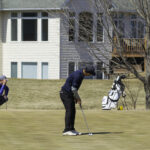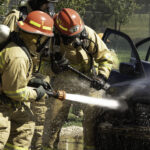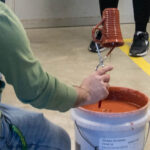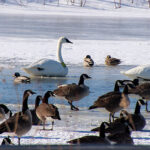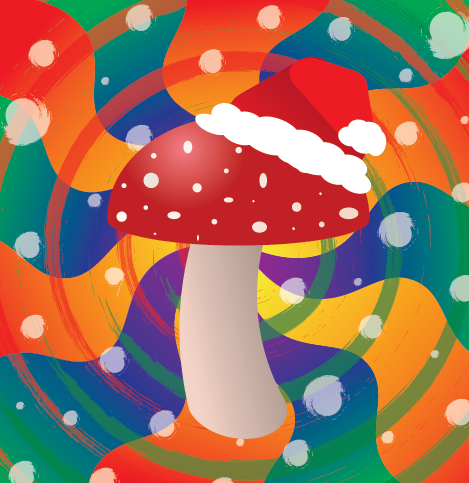
Some Christmas rituals have been around for so long that few have bothered to ponder, “Where or why did these traditions arise?” According to After Skool, a YouTube page sponsored by The Great Courses Plus and dedicated toward free education, the answer could lie within a certain psychedelic mushroom – Amanita Muscaria.
After Skool states, “The relatively large, red and white capped mushroom is the most recognizable mushroom on our planet and for many years, across various cultures and every inhabitable continent, people ingested this mushroom for its intense psychoactive properties which can lead to visual and vocational distortion of reality and depending on usage, be a catalyst for visions.” How can this be related to some people’s beloved tradition of Santa Claus and gift-giving on the 25th of December each year?
Amanita Muscaria only grows under conifer trees which are, ironically, green, pine needle trees which thrive in colder climates (like, near the North Pole). Thus, conifers are used for Christmas trees, the same trees these mushrooms are found growing under.
To prevent toxicity of the mushroom, Shamans hung them to dry on trees before delivering them to the public, inevitably creating the tradition of ornaments on Christmas trees, a nearly ignorant gesture of gratitude toward these forefather Shamans. Now you may be thinking – what is a Shaman and why should I believe shamanism relates to Christmas?
Understanding the purpose of a Shaman, what shamanism is, and how this quietly transitioned into an annual holiday requires background knowledge. According to the news site Ancient Origins, “Put simply, shamanism is a means by which humans have tried to understand the universe and our place in it. It does not force adherence to any deity or dogma. Rather, a shaman concerns him or herself with nature and uses insight to heal (physically, mentally, or spiritually) and to promote communal prosperity.”
Overall, describing Shamans using limited English language in three to four words, one could expect: selfless, good-spirited, philanthropic, and maybe delusional. Delusional must of course be considered as an option as intentional intoxication was taking place by the Shamans to interact with deities from outside our scientific-based world, yet a deeper look may have readers thinking the skeptics of this theory are the delusional ones.
The first humans to study the mushroom Amanita Muscaria with intense detail were Shamans. Being spiritual specialists, they sought to deliver what they saw as spiritual goods to others every year on December 21 – 25 during the Winter Solstice. These Shamans resided in northern, colder climates where Amanita Muscaria could thrive.
Due to climate and respect for the particular species of mushroom, Shamans dressed in many layers with outer colors designed to resemble Amanita Muscaria’s appearance and often had beards to combat weather. These outfits could answer why Santa Claus is typically imitated as an elder fellow, heavier set, wearing a red suit, and the unforgettable long, white beard.
Due to the time and geographical location, many Shamans were only able to deliver the Amanita Muscaria mushrooms down the chimney of one’s home. The tradition this fact inspired is easy to guess: why Santa comes ‘down the chimney.’
As a reminder, reindeer are real mammals and reside in colder climates of the northern hemisphere. These climates create conditions favorable to coniferous forests which are home to many Amanita Muscaria mushrooms. The hallucinogens caused by the mushrooms likely made people hallucinate flying reindeer because of visual distortions. Now we know why flying reindeer are a part of the Christmas ritual involving Santa’s ability to deliver gifts.
Just as it was a choice of ours as children to stop believing that our houses were visited each night by Santa Claus, it is our choice to believe in Amanita Muscaria’s connection to the Santa Claus/Christmas tradition. Whether one believes in the connection or not, may we all have a good, safe holiday season.

Categories: Editorials, Opinion




